Sound Track in Half Life 2 Episode 2 and Half Life Opposing Force
Hello all, We hope this article finds you well! The inevitable becomes reality. Time runs just too fast, maybe, but that´s right, Half-Life: Blue Shift turns 20 years old today. Truly this is a big deal for us and our fans.
Besides the stream with our peers working on the Raising the Bar: Redux team, we of course cannot miss this opportunity to showcase what we have had in the oven past few months. Are you ready? Because this one is really expansive!
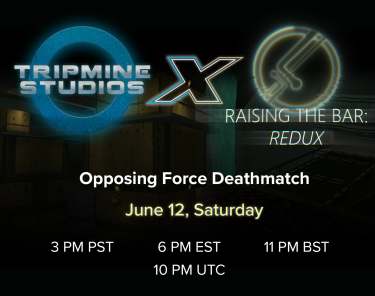
Of course, we cannot miss this opportunity to showcase what we have had cooking in the oven for the past few months. Are you ready? Because this one is really expansive! Before we start, a quick note: Uniquely for this update, we are presenting the content in two forms: an article and a video.
This article is going to get straight to the point in showcasing what we've been developing the past few months. Besides that, expect a special video within a few hours on our YouTube channel that will show this same content while additionally providing a timeline of how we got to where we are today, and what things look like moving forward. If that sounds like something right up your alley, we will of course publish when it is live on our social platforms and discord so be sure to check it out…once you're done reading here of course! Alright, we said we would get straight to the point, so on with our update!
64-Bit Engine and Hammer Architecture
This update is all about showcasing new tech we've been developing for our engine, and how we're utilizing it. The first reveal in our fairly long list is that we've enhanced the core architecture of our Source and Hammer to be running fully 64-bit. This means…
- Our versions of Source and Hammer have a significantly improved framerate for modern systems (~97% of Steam users).
- Our version of Source is capable of using more than 4GB of RAM if available. It is also capable of managing memory in a much more efficient way than 32bit counterparts.
- With improved memory usage, we are able to incorporate many modern engine features, some of which you will read about below.
- Hammer is significantly more stable, running smoother than ever.
- We've also converted other commonly used tools from Source's suite into 64-bit versions!
Sadly, there is no fancy image to go alongside this reveal as it is mostly tech changes under the hood. So, instead, how about we show you what our Black Mesa Security Guard and Marine models look like! Note these images are not pre-rendered. What you are seeing is being rendered real-time in our version of Source.


PBR Pipeline
So, you may have noticed those screenshots looked a bit higher in quality than what you'd find if you loaded up Source right now. Well, part of the reason why is our overhauled renderer. Our engine now features full PBR (Physically Based Rendering) support for models and brushes.
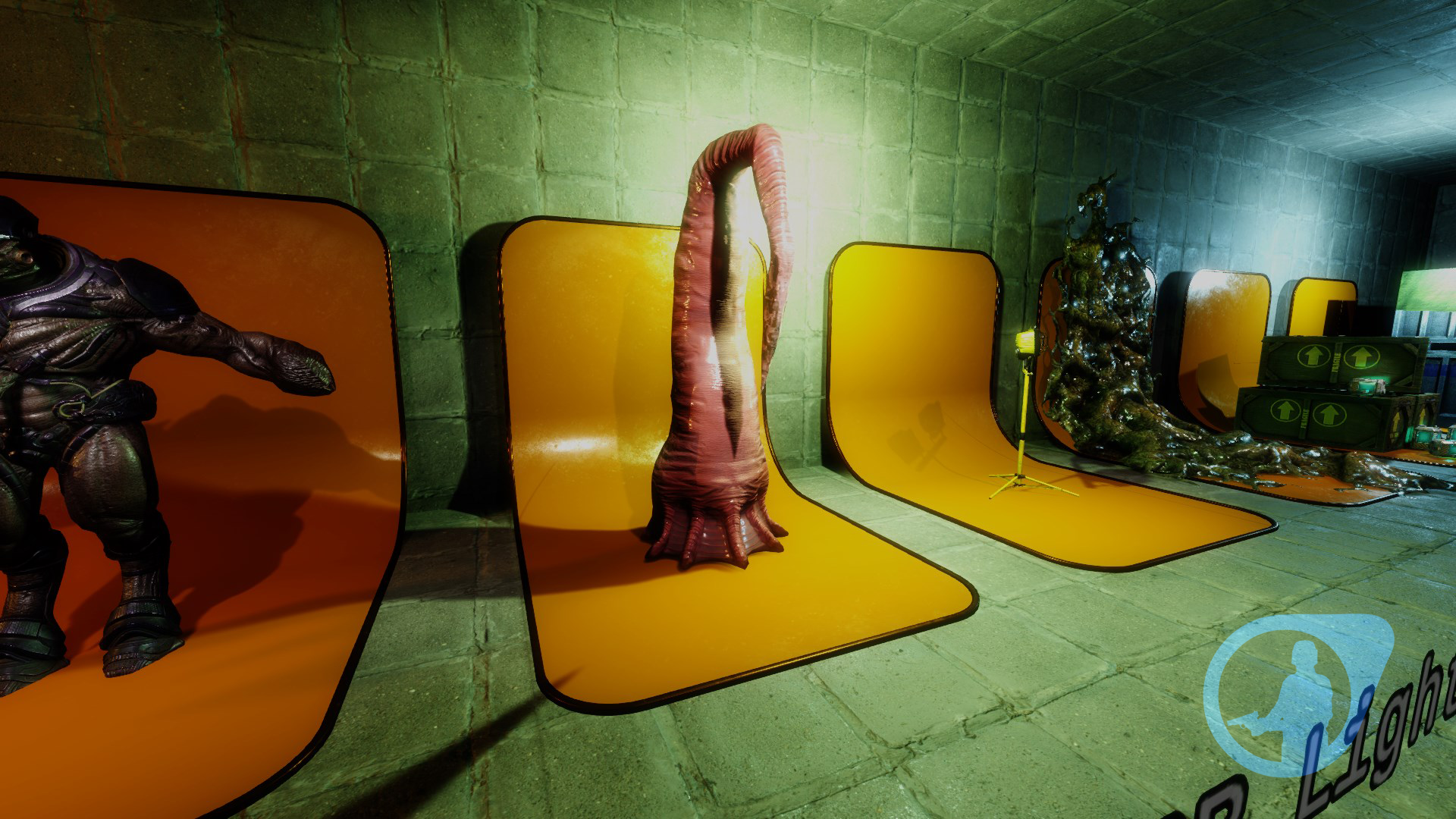
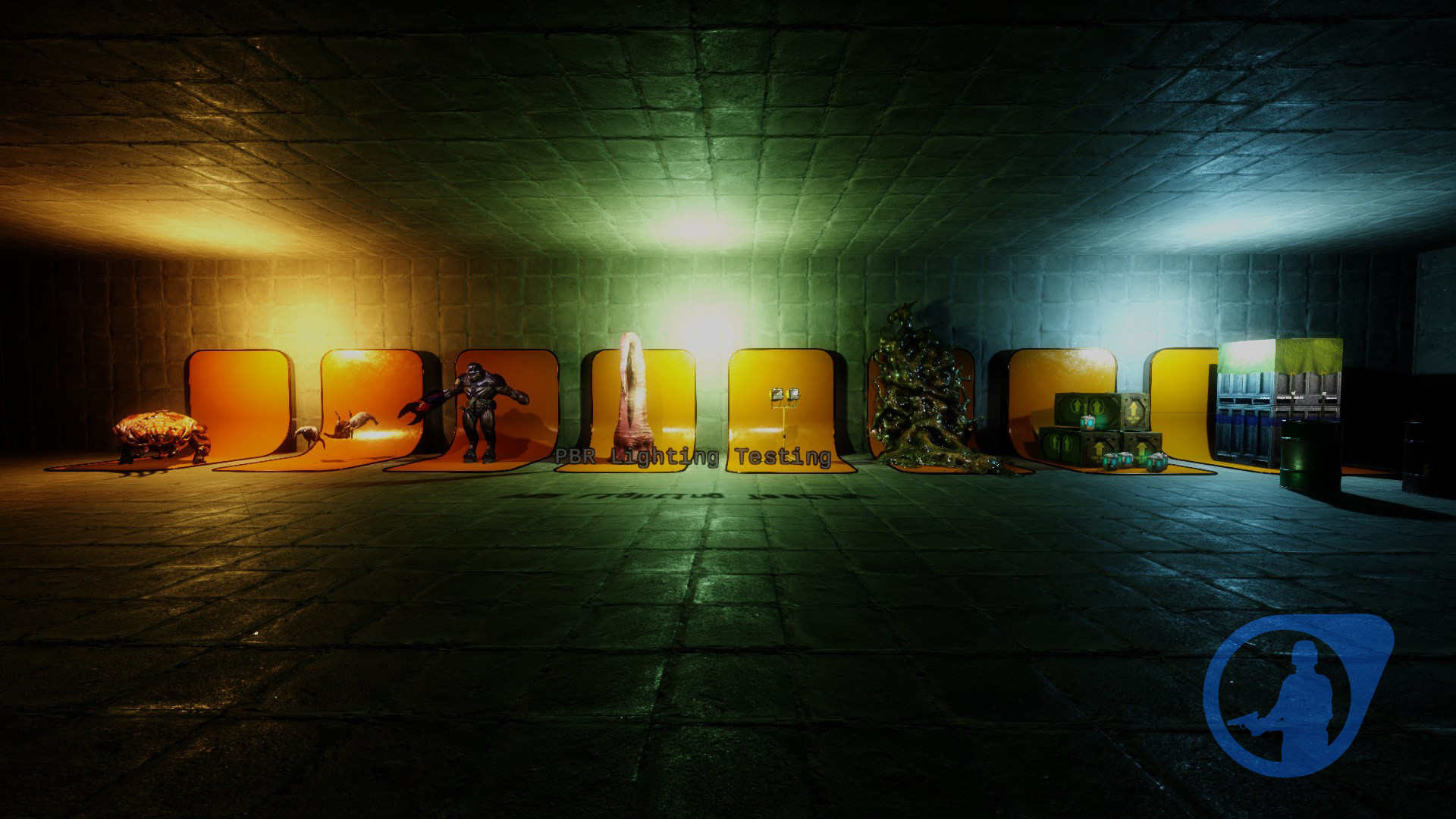
PBR is a modern rendering technique that allows for a far more natural flow of light in space. PBR texturing is also a far more approachable pipeline to modern digital artists. Overall, this is a huge win for the quality of our textures and the ease of content creation.

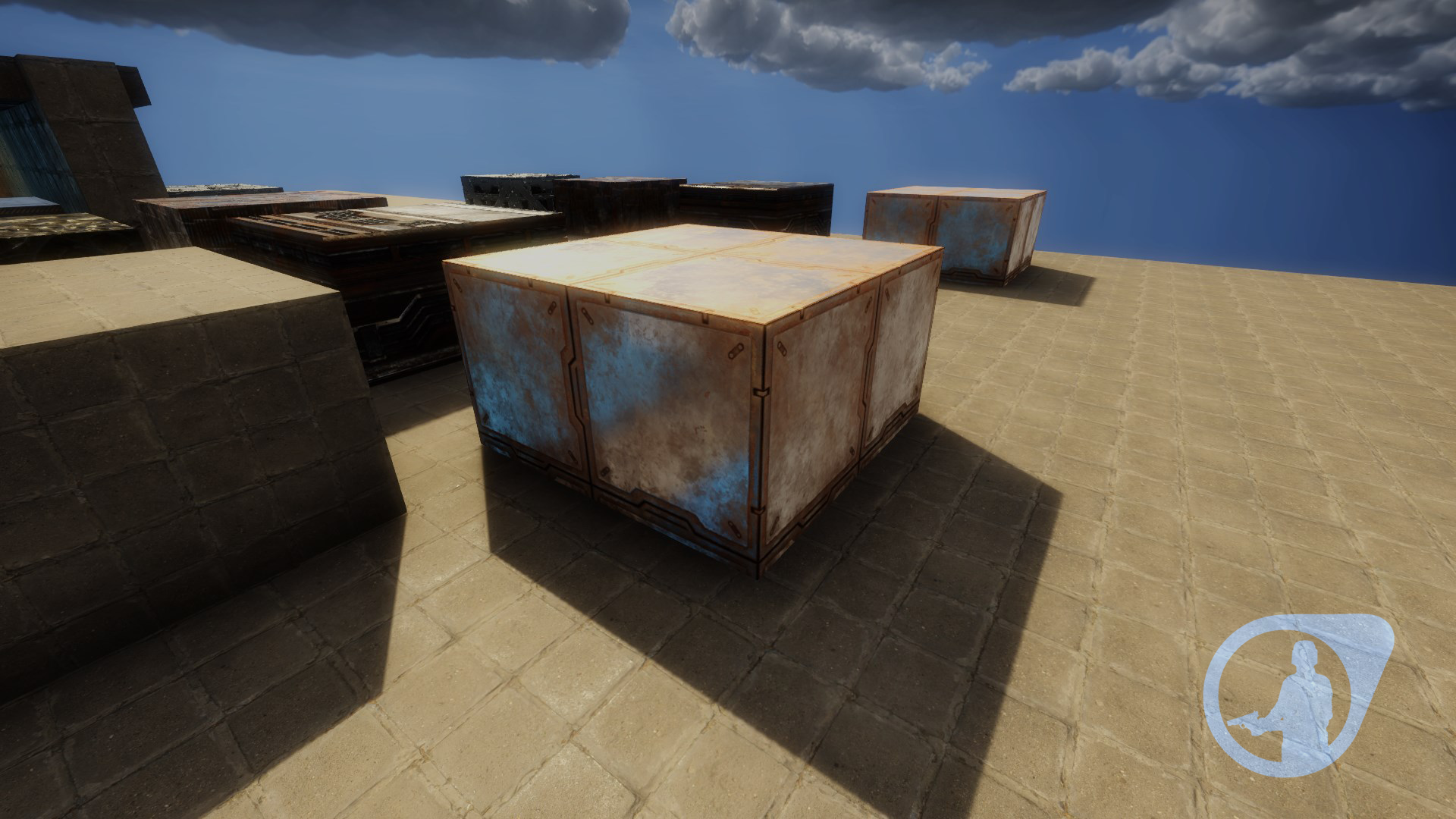
Deferred Lighting
Our next engine improvement is a big one. Alongside Source's static lighting solution, we have added an entirely new deferred light renderer on top of it. This means we are now capable of having hundreds of dynamic lights in a scene with very little performance cost. Currently we are supporting both point and spot lights. We are capable of expanding this selection if deemed necessary by environment artists.

Not only are these lights dynamic, meaning they can move and spin however the environment artists likes, but they are also capable of casting shadows on props as well as world geometry. Compared to Source's default lighting, which can only render shadows on world geometry. This goes a long way in making the space you traverse feel a lot more believable.
Our deferred lighting system also supports texture projection. This means for example, if there are bars around a light source, you can enable specialized textures (cookies) which add in these fine details to the shadows the light projects. This technique improves performance, as well as enhances the believability of the scene.


Screen Space Reflections (WIP)
A system we have just started on which will also greatly improve the look of our environments is screen space reflections support. Screen space reflections is a technique used to create more accurate, and in some ways a bit more detailed, well…reflections! It works particularly well in improving how reflections look on water, metal, and other naturally shiny surfaces. Take a look below to see a before and after comparison!


Volumetric Lighting and Godrays
Complementing our new lighting system, we have added the ability for local lights, as well as the sun, to emit volumetric lighting (also known as godrays). This is useful to emphasize how bright a light is in a dark environment, or just add some visual flare and drama.


Lens Flares
Another addition to our engine's enhanced lighting capabilities, we now support lens flares which can be created at a point defined in space, or from the sun itself. Like volumetric lighting, lens flares are a great way to show a player how bright a light source is. From a design standpoint, lens flares can also be used to guide a player towards an exit in a very dark space, or blind a player when looking at a very bright light source.

Chromatic Aberration
Chromatic aberration is a type of post processing effect that scatters light to create an odd, somewhat otherworldly look. This was a must-have system considering the Xen segments players explore in both Guard Duty and Operation: Black Mesa. The thing with post-processing techniques is you need to think of them like garlic when cooking. A little is good, but too much can ruin the dish. Below you can see a screenshot of how this subtle light-altering effect enhances the scene when you approach a Xen Portal, when combined with color correction.


HDR Bloom
If you've been reading carefully and not just skimming (tsk, tsk!) then you may have sensed this was coming. When developing our new lighting and rendering systems, we have also made improvements to Source's HDR rendering. Our significantly improved bloom functionality allows certain key parts in gameplay to really stand out! Just take a look at this Houndeye's stripes right before a shockwave is about to be sent your way!

Volume Fog
We have one last engine addition to showcase for now: volume fog. Volume fog allows designers and environment artists to place trigger boxes in maps which create areas of low visibility. This is particularly useful for underwater segments, cold environments, and hostile alien spaces.

Models and Videos
To close out this update, we are very pleased to show you a gallery of additional in-game videos, as well as some screenshots of some never-before-seen models that are quite core to gameplay. Take a look!
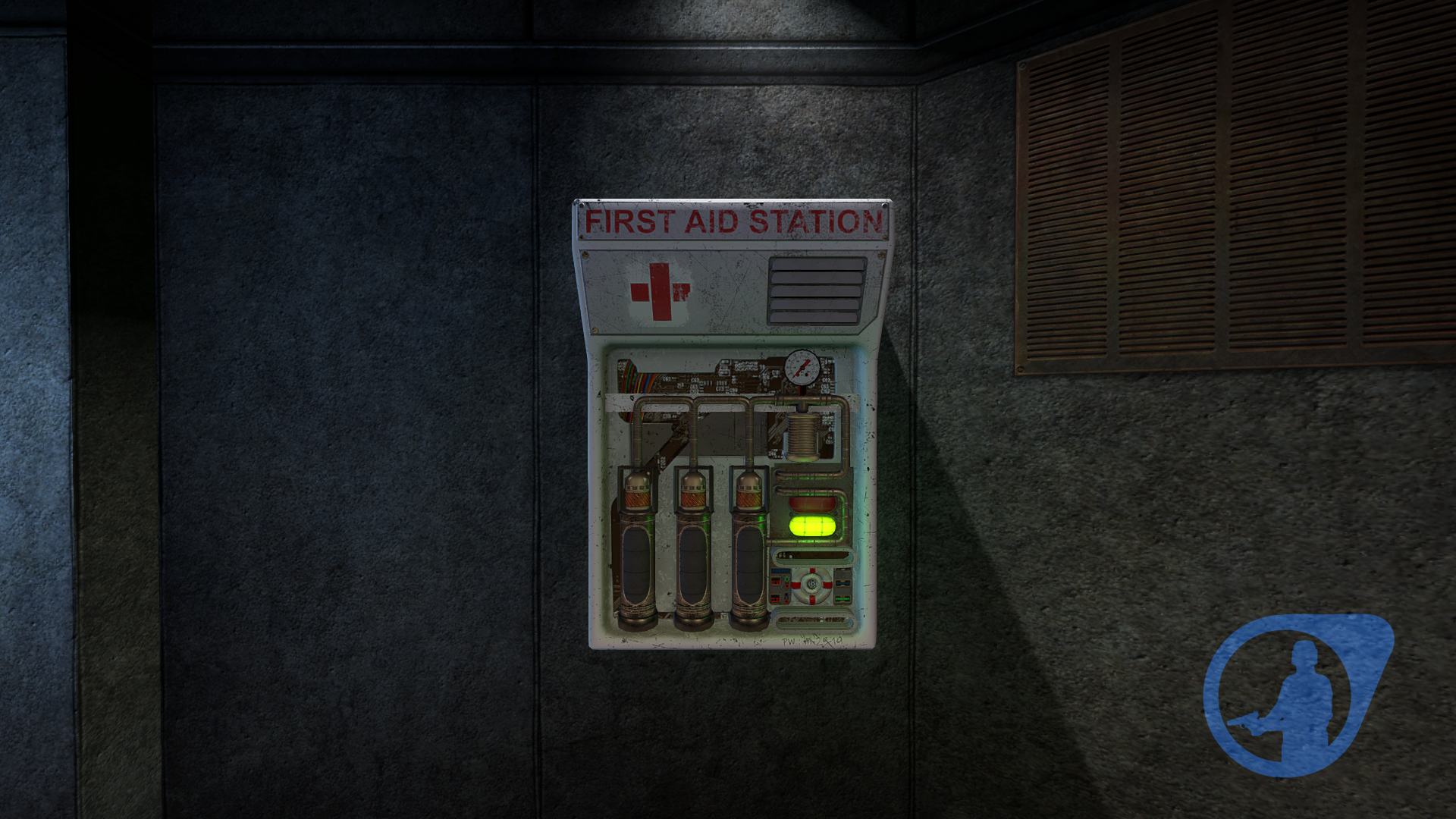
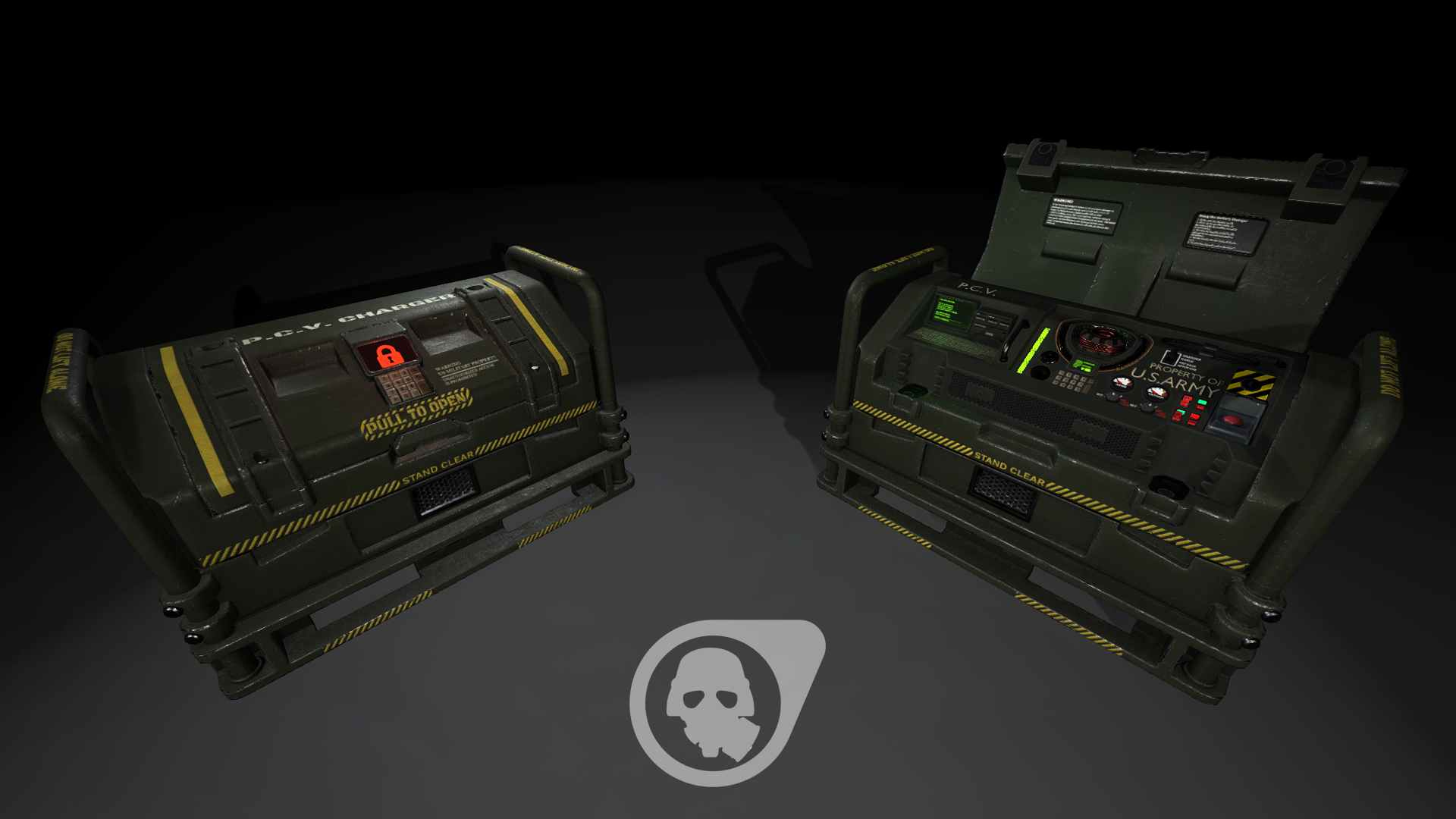
And…whew! That was quite a lot to show this time! We look forward to sharing more news with you all in the future. There's some exciting stuff cooking behind the scenes that may just be revealed in the not-so-distant future. Watch the space…
Cheers and wishing you all well,
-Tripmine Studios
Sound Track in Half Life 2 Episode 2 and Half Life Opposing Force
Source: https://www.moddb.com/mods/operation-black-mesa
0 Response to "Sound Track in Half Life 2 Episode 2 and Half Life Opposing Force"
Postar um comentário